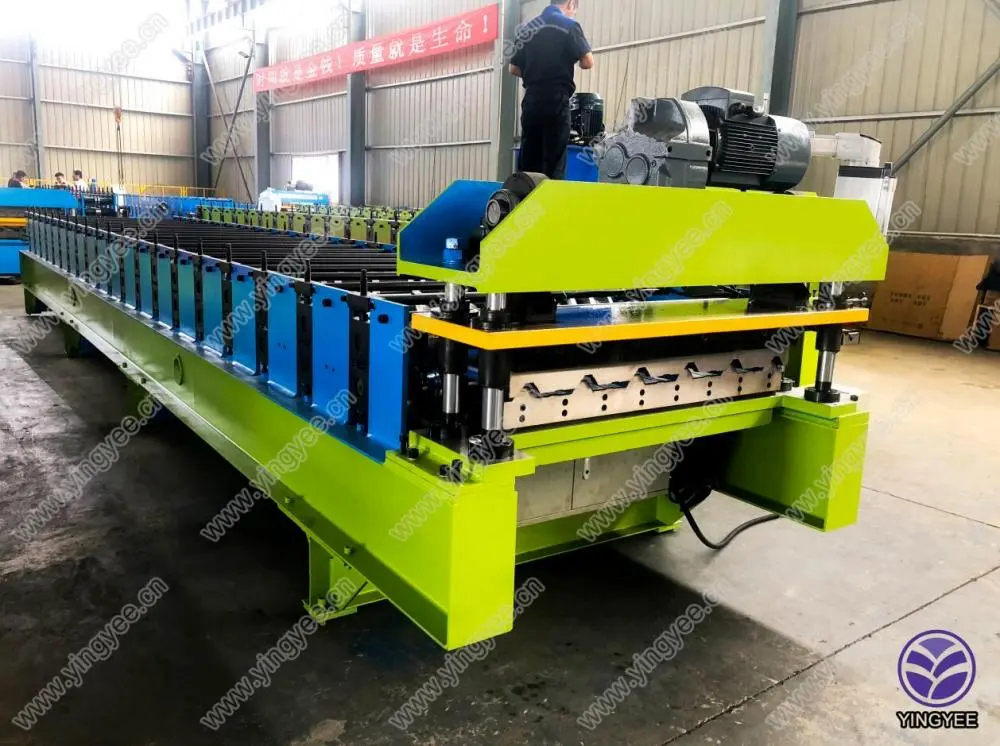
The Evolution and Importance of Metal Rolling Door Cold Forming Machines
In the modern manufacturing landscape, the demand for efficient, durable, and cost-effective production processes is greater than ever. One of the critical innovations that have significantly transformed the production of metal rolling doors is the cold forming machine. This machinery is pivotal for developing metal rolling doors used in warehouses, industrial buildings, and residential properties. Understanding the functionality and benefits of metal rolling door cold forming machines is essential for businesses looking to optimize production capabilities.
What is a Cold Forming Machine?
Cold forming machines are specialized pieces of equipment designed to shape metal into various profiles without the application of heat. This process enhances the metal's strength and structural integrity, making it more resilient for various applications. Cold forming involves feeding metal strips into the machine, where they pass through a series of rollers that progressively shape the metal into the desired profile.
The manufacturing of metal rolling doors requires precision engineering, as these doors must not only fit specific dimensions but also withstand daily wear and tear. Cold forming machines offer unrivaled accuracy and repeatability, producing doors that meet high standards of quality and durability.
How Metal Rolling Door Cold Forming Machines Operate
The operation of a metal rolling door cold forming machine can be broken down into several key steps
1. Material Feeding The process begins with feeding a flat metal strip into the machine. The material is typically steel or aluminum, chosen for their strength and light weight.
2. Roll Forming As the metal strip progresses through the machine, it passes through a series of specially designed rollers. Each roller progressively bends and shapes the strip, transforming it into a rolled profile suitable for door construction.
3. Cutting and Finishing Once the desired profile is achieved, the machine can cut the metal to the required lengths. Additional options for finishing, such as coating or painting, can also be integrated into the production line.

4. Quality Control Finally, a quality control system is in place to ensure that each manufactured door meets the required specifications, such as dimensions, strength, and surface finish.
Advantages of Using Cold Forming Machines
Cold forming machines offer numerous advantages to manufacturers
1. Cost Efficiency By utilizing a continuous production process, cold forming machines can significantly reduce manufacturing costs. The ability to process materials without significant waste contributes to overall savings.
2. Enhanced Material Strength The process of cold working improves the yield strength of the metal, resulting in stronger and more durable products. This is particularly important for rolling doors, which must withstand external pressures, impacts, and environmental factors.
3. Precision and Consistency Cold forming machines provide consistent and precise results, ensuring that each door produced meets stringent quality standards. This consistency is crucial in industries where uniformity and reliability are paramount.
4. Versatility These machines can be adjusted to produce various profiles, allowing manufacturers to cater to diverse customer needs and preferences. Whether for standard or custom designs, a cold forming machine can accommodate different specifications.
5. Reduced Lead Time The efficiency of cold forming machines translates to shorter lead times, enabling manufacturers to respond quickly to market demands. This agility allows businesses to stay competitive in a fast-paced environment.
Conclusion
Metal rolling door cold forming machines have revolutionized the way manufacturers produce rolling doors, balancing efficiency with quality and durability. As industries continue to evolve, the importance of such equipment will undoubtedly grow. By leveraging advanced manufacturing technologies like cold forming, businesses can enhance their production capabilities, reduce costs, and deliver superior products to the market. Understanding and investing in these machines is a strategic move for any manufacturer looking to thrive in today’s competitive landscape.